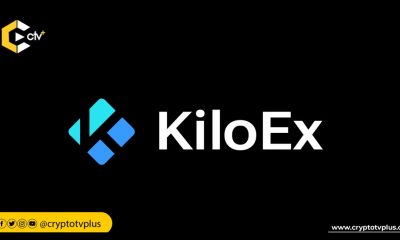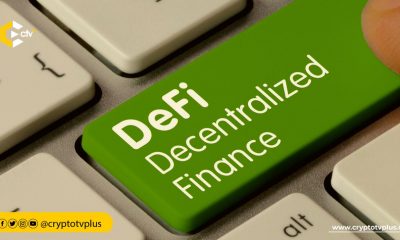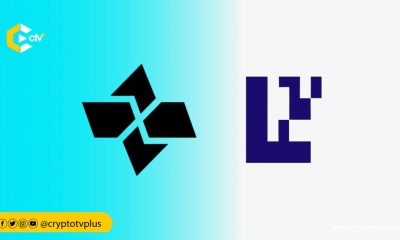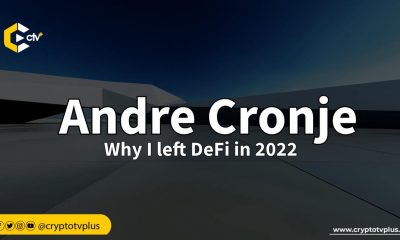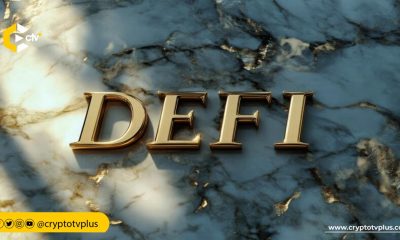FEATURED
VP of Bitmart Shares Insights on the Future of Finance with DeFi and CeFi

In an insightful session at the ETHCC Paris, Victoria Feng, Vice President of Business Development at BitMart Exchange, narrated the intricacies of centralized finance (CeFi) and decentralized finance (DeFi), shedding light on their similarities, differences, and potential futures.
BitMart is a global digital asset trading platform that offers a wide range of cryptocurrencies for trading, including Bitcoin, Ethereum, and over 1,500 altcoins.
The exchange aims to provide a secure, user-friendly, and efficient platform for both beginners and experienced traders to buy, sell, and trade various cryptocurrencies.
BitMart with a user base of 5 million, offers features such as spot trading, futures trading, copy trading, and margin trading. Users can create an account, deposit funds, and start trading various cryptocurrency pairs. The platform also provides advanced trading tools and charts to help users analyze market trends and make informed trading decisions.
CeFi relies on centralized institutions, providing traditional services with regulation and support, but users have less control and transparency. DeFi is decentralized, open-source finance on the blockchain, offering direct ownership, transparency, and innovative services.
Centralized Finance (CeFi) – the Pros
Speaking about the CeFi ecosystem, she said that traditional finance has a very large and well-established user base that comes from years of using traditional banks and institutions.
Also, the ease of access and familiarity of these processes are seen as advantageous aspects, as users don’t need to adapt to entirely new methods of handling their finances.
The convenience and familiarity of these systems, including physical branches and customer service, are part of the merits held by CeFi. She highlighted customer support as a key feature, providing assistance and solutions when needed.
This level of support contributes to user confidence and provides a safety net in case anything goes wrong during transactions or account management.
Furthermore, she noted that the CeFi has low risks associated with its services. This stems from the established regulatory framework and security measures. People are accustomed to the regulatory framework, security measures, and reliability of these systems, which have been refined over time.
Cons
Conversely, the VP noted that CeFi has several drawbacks. First, she mentioned that the interest rates offered on deposits in banks and other traditional financial institutions are often very low, which means that the returns individuals earn on their deposited funds are minimal.
Secondly, she noted that although technological advancement has made the transfer of money faster than in the past, it still takes time. The major reason behind this is the presence of middlemen.
Other weaknesses she mentioned for CeFi are stringent requirements for accessing services such as opening accounts, and creating specific investment portfolios; limited accessibility where it is difficult for users without an account to access services, especially in difficult times; and lack of privacy where users are demanded to share personal data.
Decentralized Finance (DeFi) – the Pros
Victoria also discussed the pros of DeFi. According to her, DeFi allows for faster and easier transactions. The rate of asset transfer on DeFi protocols is faster compared with CeFi where there are several middlemen.
Also, she noted that individuals can engage with DeFi protocols, gaining voting rights and the ability to participate in decisions, which is different from CeFi.
Other merits she mentioned are that users become custodians of their assets (although this comes with a high level of responsibility for the user); there’s no need for extensive identity checks, making the process instant; transactions occur 24/7, and blockchain technology ensures rapid transfers.
Cons
The list of cons for DeFi mentioned by Victoria starts with usability challenges. DeFi platforms, being open-source, can be complex and challenging to use, especially for individuals who are not well-versed in the world of cryptocurrencies.
Setting up a wallet and engaging in transactions requires a certain level of technical knowledge. This can be a barrier for less tech-savvy users, like older generations.
Another aspect is the cost of learning about DeFi protocols. The learning curve for DeFi can be steep, leading to a higher education cost. Users need to invest time and effort to understand how DeFi works, which can deter those who are not already familiar with blockchain and cryptocurrency concepts.
The other downsides highlighted are lack of support (DeFi lacks reliable customer support, unlike centralized services, as users must solve problems themselves); risk and responsibility (where users control their assets, they have limited assistance if issues arise); and higher risk (DeFi transactions pose a greater risk of scams, and hacks, due to the absence of middlemen and regulatory safeguards).
The future – Collaboration of CeFi and DeFi
Victoria shared insights into the future of finance, envisioning a hybrid model that blends the benefits of CeFi and DeFi. This model would offer users the ease of traditional finance, combined with the security and accessibility of blockchain technology.
While acknowledging the complexities of developing such a system, she expressed optimism that advancements in the space could bridge the gap and create a more seamless financial ecosystem.
Victoria discussed various examples, such as the emergence of platforms like Uniswap that cater to decentralized financial needs. She stressed the need for continued education in this evolving landscape and the importance of improving user experience to make DeFi more accessible to a broader audience.
Read also; NFT Wash trading: not as bad as you think — Supersight’s founder





